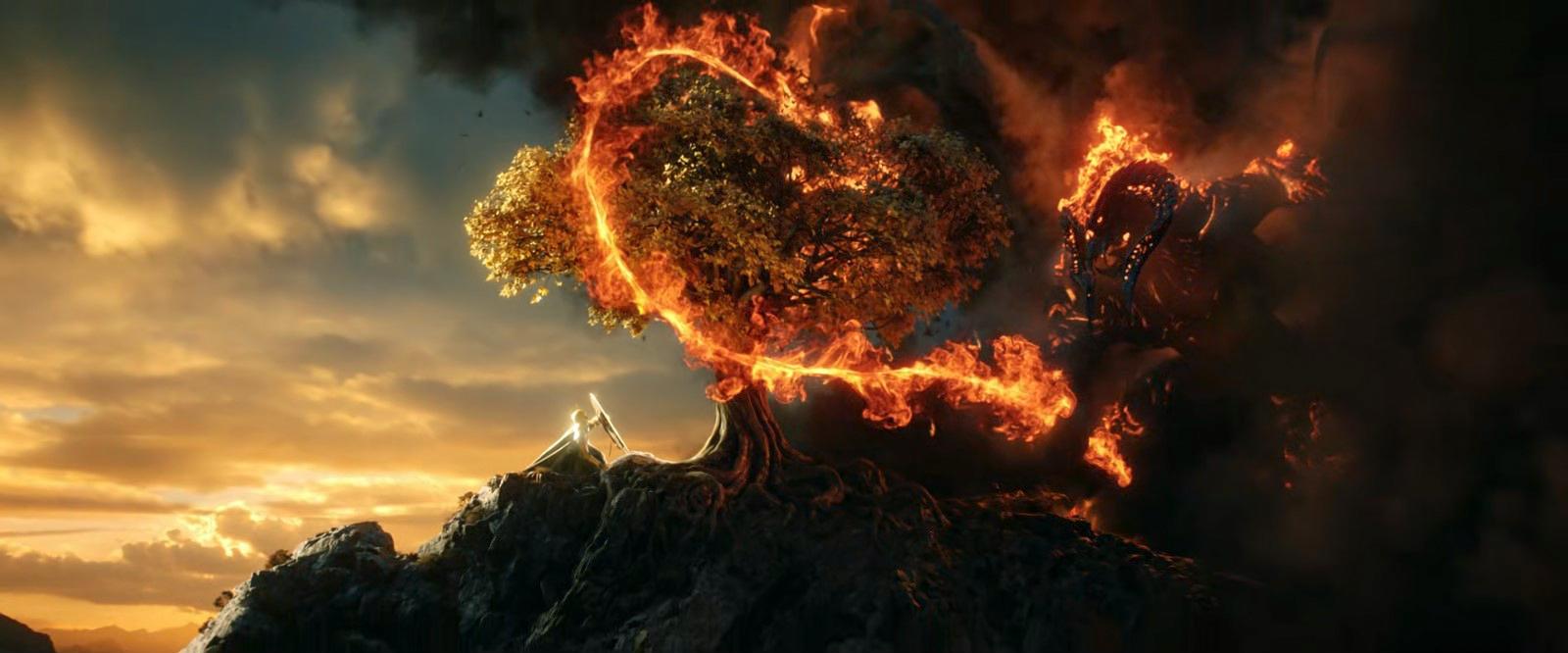
The Rings of Power: Our In-depth Analysis Of Episode Five “Partings”
Mae Govannen, Mellyn
Today we are here to analyze the fifth episode of the show, titled “Partings”. In this episode we find again the direction of Wayne Yip, while at the writing we have Justin Doble, known for his precious work in Stranger Things.
Before we begin, I need to make a brief premise. In this analysis I will not judge the choices of the production from a lore point of view, nor will I go to analyze the differences with the writings, as, as I often say, a television series is a completely different medium from a book, and this requires completely different dynamics and approaches. Also I want each of you to judge the plot based on your own vision, because it is right that everyone has their own joys or their own doubts. This analysis, therefore, will only deal with what is seen on the show, trying to better understand the work of the production. Ultimately, I am the least suitable person to judge a work in progress, and I always prefer to wait for the product to say everything it has to say in order to give my conclusions.
Rhovanion (Hobbits+Meteor Man)
The episode opens with a dialogue between the stranger and Nori, in which we see that the mysterious character has learned a few more words and seems to understand the language of the halflings better. Immediately after we are accompanied in some stages of the hobbits’ journey, through the splendid words of the song “This Wandering Day” (sung by Megan Richards) and the omnipresent map of Middle-earth, which follows their path step by step. The harfoots then stop in a dark forest to gather food, and some of them (including Poppy and Nori) are attacked by ancient wolves, who are chased away by the timely intervention of the Meteor Man. The mysterious character shows once again his great powers, and is able to send the creatures on the run first, then to heal himself with a spell related to water, scaring Nori.

The scene shifts to the three mystics we’ve seen in the latest trailers, who seem to be called The Nomadic, The Ascetic and The Dweller (source IMDB). The interesting thing is that these characters are seen on the meteor impact site, and here I want to throw myself into a little hypothesis. In all likelihood, these cultists are looking for Sauron to help him build his domain, and since the meteor’s passage is a sign associated with evil, they are following that trail, hoping to find the Dark Lord. If this hypothesis turns out to be true, the stranger will soon find himself face to face with the mystics, and at that point no one knows what might happen. Another interesting detail is found in a relic in possession of one of the three mysterious characters (That kind of silver disc), who seems to carry the same symbol that the meteor man has drawn several times in episode two. The mystery continues to deepen …
The Southlands
The situation in Ostirith is quite serious, as Adar has sent an ultimatum to the people of the south, asking them to submit to him. This development has obviously generated disorders, and has divided the people into two slices: those who have hope and remains at the tower and those who, instead, to avoid death, intend to offer themselves to the enemy. The sensations of this scenario are very reminiscent of those experienced in Peter Jackson’s “The Two Towers”, in particular in Elm’s Deep scenes, where despair and lack of hope made the atmosphere dark and worrying. Waldreg and the people who have decided to leave the tower come before Adar, and here we witness a very curious scene. The fallen elf seems to get nervous when he is called Sauron, and this makes us understand that he has nothing to do with the dark lord, and indeed he probably hates him. At that point Adar, in order to “officially” seal the inclusion of men into his ranks, asks Waldreg to kill Rowan, and at that moment the scene ends.
The After Party show for episode 5 of #TheRingsOfPower will be live at 7:45 PM UK Time with special guest Alan from PPP @prancingponypod on panel 2!
Join us soon!https://t.co/NOYJSZsy76 pic.twitter.com/Bw5KUkKDEy
— Fellowship of Fans (@FellowshipFans) September 25, 2022
We return to Ostirith, where we see Arondir’s hope colliding with Bronwyn’s desperation. The silvan elf manages to establish a good relationship with Theo, and the young man shows him the evil relic he has been hiding all this time. Apparently we are faced with a key, but for what we do not know. We can understand that this object is the legacy of a power generated by Sauron and Morgoth, which had the ability to subdue the people of the south. We also come to know, thanks to Arondir, that Adar intends to create a home for the orcs, and this may lead us to think that his plan is to awaken Mount Doom using that power, in order to darken the skies and make them barren lands devastated by flames. At this point we see the corrupt elf open the dances and, accompanied by the fast pace of “Nampat”, we see the evil army marching towards the tower. The battle for the Southlands is now near.
Nùmenor
Preparations for departure are underway in Numenor, in a setting that sees the people divided between enthusiasm, doubts and racism. The mighty kingdom of men, not having been at war for many years (apparently), is training the new generation for war, especially to fight against orcs, led by the elegant dexterity of Galadriel. The most interesting thing about this scenario, however, in my opinion, are the political dialogues, in which Trystan Gravelle’s Pharazon shines. The chancellor of the kingdom has an interesting dialogue with his son Kemen, in which he shows all his ambition in supporting the queen’s decisions, since, if the south will have a king, that kingdom will forever be indebted to Numenor, and this would imply taxes, wealth, lands and great advantages from an economic and political point of view. However, Kemen, driven by the relationship with Earien, tries to block the war expedition by blowing up two of the ships of the realm during the night, however being saved in extremis by Isildur (which will probably lead him to be accepted into the army).
?Official: Concept art for episode 5 of #TheRingsOfPower pic.twitter.com/g15Mu8yPRE
— Fellowship of Fans (@FellowshipFans) September 23, 2022
And it is precisely Isildur, in this regard, the character that i want to talk about. His figure was presented to us doubtful about his future and in contrast with what his father would like for him. The exclusion from the sea guard is the pretext the production wants to give to his rise, which may seem like a rather brave choice, but for now the character development is interesting and deep, and I’m curious to understand how his story will continue. Another very important part of the episode lies in the dialogues between Halbrand and Galadriel, who in this episode deepen their knowledge through the stories of their past. The two continue to be often in conflict, but eventually manage to understand each other and find a meeting point about the war expedition to the Suthlands. The council of Numenor, in this regard, decides that despite the loss of two ships the army can leave, and in fact we see, in the last frame of the episode, the beautiful departure of the Numenorean ships. There is one last detail I would like to focus on. During the episode we see Miriel announcing her father the departure, but the Numenorean King urges her not to leave the island, as she would find the darkness in Middle-earth. From the writings we know that Tar-Palantir means in Quenya “The Farsighted”, and this may lead to think that the production has given him a certain sensitivity in the field of foresight. In this sense, it is possible that he has already seen Sauron return in the Southlands, and for this reason he asks his daughter not to leave.
Lindon
Here we are finally at the weirdest and most divisive moment of the entire episode, and perhaps the entire first season. The scene of the famous dinner (already glimpsed in the trailers and in the images of Empire Magazine) develops with the intent of uniting dwarves and elves in a productive alliance. We note that Durin IV and Gil-galad, after a hint of contrast, seem to understand each other, toasting the seal of the aforementioned alliance. At the end of the dinner comes the dialogue that divided the fandom, and that led the production on a very risky path. Let’s try to understand their intentions, trying to incastonate this choice in a way that makes sense.
Elrond and Gil-galad speaks of a dark legend, which the half-elf himself defines as “apocryphal”, and therefore not authentic. This story, called “The Song of the Roots of Hithaeglir”, tells of the fate of one of the Silmarils, who, according to this legend, was in a large tree on the top of the Misty Mountains. A brave elf with a pure heart (perhaps Glorfindel?) defended that tree from the ferocious attacks of a Balrog of Morgoth, who wanted to destroy it instead. Their clash caused a powerful thunderbolt to fall, hitting the tree and radiating the energy of the Silmaril into the mountain, creating Mithril. The story in question was not written by Tolkien, but was devised by the production for the show’s narrative developments. The meaning of this invention is to give Mithril a value of a completely different weight than what it normally would have in books. Being in the show a product of the energy of a Silmaril, the light produced by the material could benefit the life of the elves, since, as we see in the episode, their decay (the dying tree) would have already begun. At this point, there are some important elements to consider. In Tolkien’s letter 131, addressed to Milton Waldman, the professor tells how the elves, in the Second Age, were obsessed with their vanishing, and how they wanted to keep the memory and “sanctity” of the West while remaining in Middle-earth. Their perception of the changes caused by the time was different, and despite the desire to beautify and heal the mortal lands, their sadness grew costantly. This letter leads us to justify, in a certain sense, the need for divine light that the elves have in the show, as they realize the beginning of their decay. The subsequent dialogue between Elrond and Celebrimbor, in which the possible “death” of the elves is mentioned, may actually be simply the loss of “bliss”, making them more vulnerable to evil (as the Jackson films with Arwen).
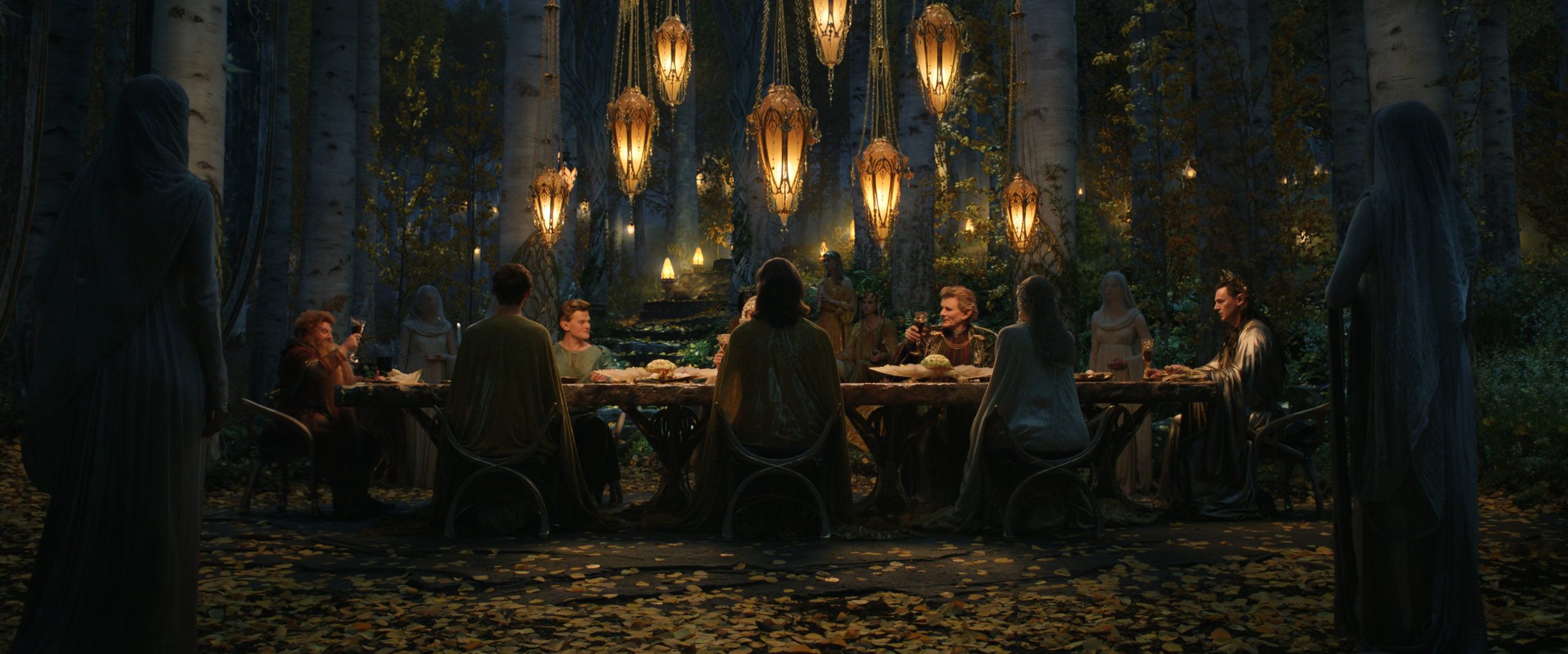
Now let’s talk a little about Mithril. From the books we know that the elves were the first to work it and know it, but in Aman, therefore in the blessed realm. This material, curiously, in Middle-earth is found only in the subsoil of Khazad Dum, therefore only under the Misty Mountains. The production may have wanted to exploit this geographical “uniqueness” to create an ad hoc legend, and at the same time raise the value of Mithril. What about the forge? Celebrimbor is in a hurry because he wants to delay the loss of light in the elves at all costs, and believes that in this regard, the light of Mithril can act as an “infinite battery” of this light. At this point there are two hypotheses. The first is that this situation can only be the result of a popular belief in elves, and that in reality it is not life that leaves them, but simply their “divine light”, which would lead them to decay over the ages. The second is that instead, assuming that everything is true, Gil-galad and Celebrimbor will realize that they cannot forge rings or jewels for all the elves, and at that point Feanor’s nephew will decide to forge three rings (We know that Nenya was forged with Mithril) that they can preserve the light and beauty of the elves until the end of their days. A Third and last option could lie in an off screen deceive of Annatar, but at the moment is very hard to tell.
Whatever the implication, the production has certainly changed the meaning of Mithril, and that in itself is a big risk. As I am, I prefer to wait for the plot to develop before making a judgment, but I understand that this choice may have raised eyebrows for many of you. In all of this, the friendship between Durin and Elrond continues to be one of the best highlights of the show, and there are no doubts about this.
— glorfindel and the balrog; the rings of power pic.twitter.com/XbN445CL0z
— ؘ (@tolkiengifs) September 23, 2022
Final Toughts
We have reached the final conclusions of this fifth episode of the show, and I want to apologize for writing so much … I hope you are not bored. This was probably the last transitional episode of this first season, as well as the last directed by Wayne Yip. As with last week, the shooting and direction are elegant and modern, with always very fluid and satisfying changes of scene, and this is also due to Aaron Morton, director of photography. The visual effects shine and continue to be one of the highlights of the show, as evidenced by the three wolves seen in the hobbit storyline and the explosion of ships in Numenor. The music fit so good with every scene, and this is another great strong point of the show.
The deviations from the writing in this episode have been heavy, and I understand everyone who has been disappointed or angry about some choices, but, as I always say, I think it is better to wait while the plots evolve and what explanations the production will give us. Thank you for rereading the analysis this week and can’t wait to see you for the next episode.

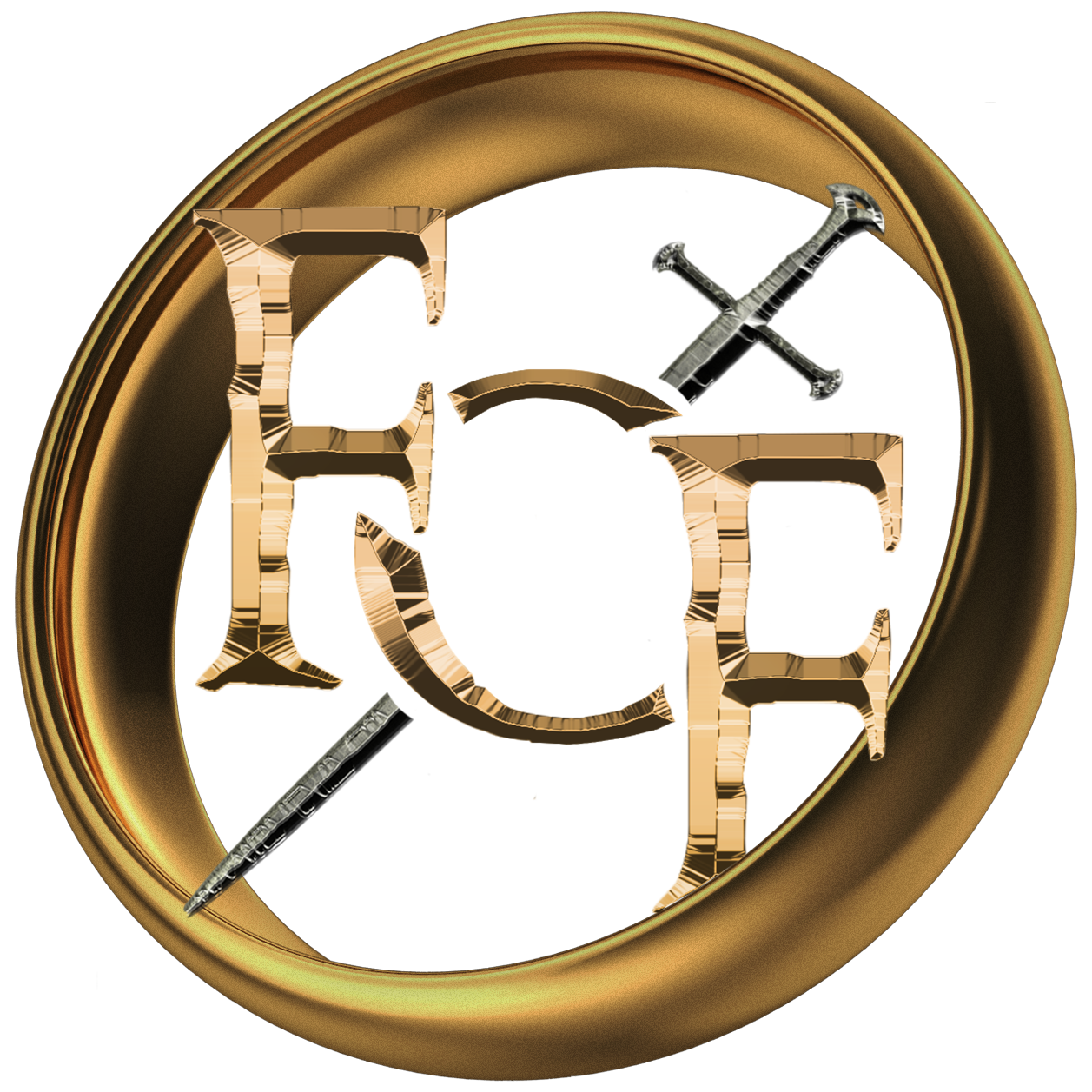
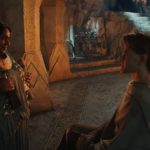
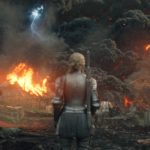
No Comments